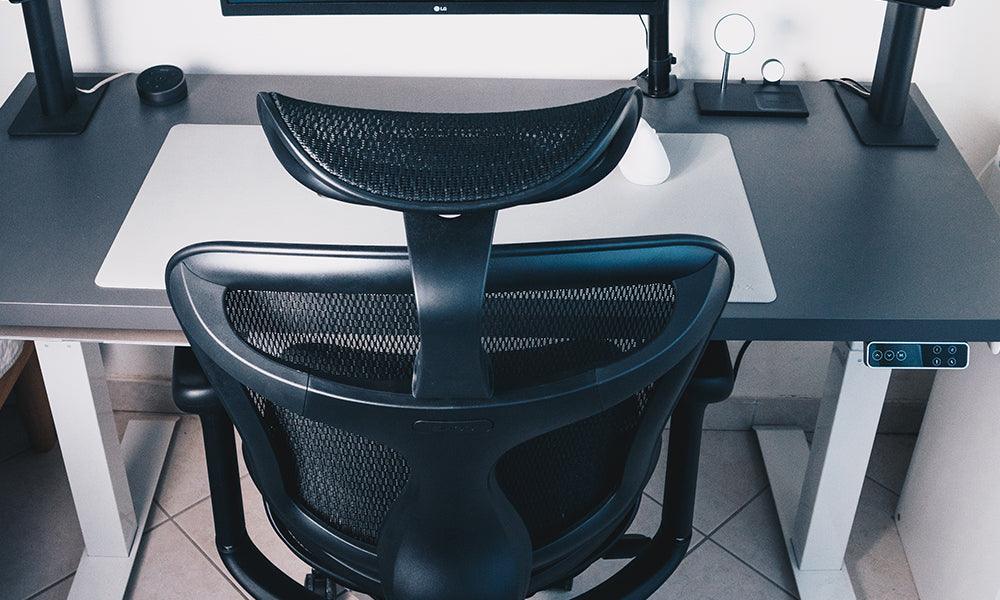Unlocking the Secrets of Chair Height: The Impact on Health and Productivity Revealed

SIHOOOffice |
Postural Problems:
One of the primary issues associated with a chair set too high is poor posture. When your chair is not adjusted to the proper height, it can lead to slouching or leaning forward, putting strain on your spine. Over time, this can result in chronic back pain, muscle tension, and even more severe conditions like spinal misalignment. Maintaining proper posture is crucial for preventing long-term musculoskeletal problems.
Neck and Shoulder Strain:
A chair that is too high can also contribute to neck and shoulder strain. When your chair doesn't align with your desk properly, you may find yourself craning your neck upward or reaching too high for your keyboard and mouse. This prolonged strain can lead to discomfort, headaches, and, in extreme cases, conditions like cervical spondylosis. Addressing the height of your chair is essential for maintaining a neutral and comfortable position for your neck and shoulders.
Circulation Issues:
Improperly adjusted chairs can have adverse effects on blood circulation. When the chair is too high, it may compress blood vessels behind your knees, leading to numbness and tingling in the legs. Over time, this can contribute to more serious issues, such as deep vein thrombosis (DVT). Maintaining proper chair height is crucial for ensuring optimal blood flow throughout the body, reducing the risk of circulation-related problems.
Impact on Productivity:
Beyond the physical repercussions, an uncomfortable chair can significantly impact your productivity and overall well-being. Discomfort and pain caused by an improperly adjusted chair can lead to distractions, decreased focus, and increased stress levels. A comfortable and ergonomically sound chair, on the other hand, promotes a conducive work environment, enhancing concentration and efficiency.
Strategies for Proper Chair Adjustment:
Now that we understand the potential consequences of a chair set too high, let's explore practical strategies for proper chair adjustment:
a. Seat Height:
Adjust your chair height so that your feet rest flat on the floor, forming a 90-degree angle at the knees. This promotes proper circulation and reduces strain on the lower back.
b. Desk Alignment:
Ensure that your chair is aligned with your desk. Your arms should rest comfortably on the desk, forming a 90-degree angle at the elbows when typing. This minimizes strain on the shoulders and neck.
c. Lumbar Support:
Utilize any lumbar support features your chair may have to maintain the natural curve of your spine. If your chair lacks this feature, consider using a separate lumbar pillow.
d. Armrests:
Adjust the armrests to a height where your arms can rest comfortably, forming a 90-degree angle at the elbows. This helps prevent shoulder and neck strain.
e. Monitor Placement:
Ensure that your monitor is at eye level to prevent unnecessary neck strain. Consider using a monitor stand if needed.
Investing in Ergonomic Solutions:
If adjusting your current chair does not alleviate the issues, it may be worth considering investing in an ergonomic chair designed to support proper posture and provide customizable adjustments. Ergonomic chairs often come with features like adjustable armrests, lumbar support, and seat height, promoting a healthier and more comfortable sitting experience.
Regular Breaks and Movement:
Regardless of your chair's height, taking regular breaks and incorporating movement into your routine is crucial. Stand up, stretch, and walk around every 30 minutes to prevent stiffness and improve circulation. These breaks not only benefit your physical health but also contribute to increased mental alertness.
Conclusion:
In the fast-paced digital age, where many of us spend hours at a desk, the importance of a properly adjusted chair cannot be overstated. The consequences of a chair set too high extend beyond mere discomfort, impacting our musculoskeletal health, circulation, and overall productivity. By understanding the potential risks and implementing the recommended adjustments and ergonomic solutions, you can create a workspace that fosters both physical well-being and optimal performance. Don't underestimate the impact of your chair's height – a small adjustment can make a significant difference in your health and daily productivity.


































